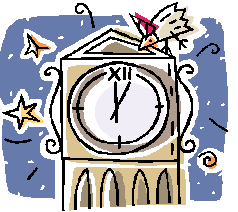Or search by topic
Number and algebra
Geometry and measure
Probability and statistics
Working mathematically
Advanced mathematics
For younger learners
Published 2011 Revised 2017
The New Millennium: When Did it Begin?

Not everybody agreed if the Third Millennium actually began on January 1st in the year 2000 AD, despite the fact that many millennium celebrations took place around the world. Many people think that we have just moved into the third millennium this January 1st, 2001.
What is agreed upon is that a millennium is an interval of 1000 years and a century is an interval of 100 years. However, because there is no such thing as year zero, from the start of this era an interval of 1 year had only passed at the end of the year named 1 AD - not at the beginning of the year. This is easier to understand if you think about the first century. 100 years will only have elapsed at the end of the year 100 AD. You wouldn't expect the second century to begin until after the first the century was over, which would be at the end of the year 100 AD. It is therefore clear that 2000 years will only have elapsed when we arrive at midnight on 31 December 2000. So the 3rd Millennium and the 21st Century actually start at the same moment, which is zero hour UTC (commonly known as GMT) on January 1st 2001.
Scientists, especially astronomers, are interested in how time is measured. There are web sites to visit observatories like the one in Greenwich, England, where you can find more information about the start of the millennium and time in general (http://www.rmg.co.uk/discover/explore/time ) and the history of time measuring tools (http://physics.nist.gov/GenInt/Time/time.html ).
You may also like
Times
Which times on a digital clock have a line of symmetry? Which look the same upside-down? You might like to try this investigation and find out!
Clock Hands
This investigation explores using different shapes as the hands of the clock. What things occur as the the hands move.
Ten Green Bottles
Do you know the rhyme about ten green bottles hanging on a wall? If the first bottle fell at ten past five and the others fell down at 5 minute intervals, what time would the last bottle fall down?

